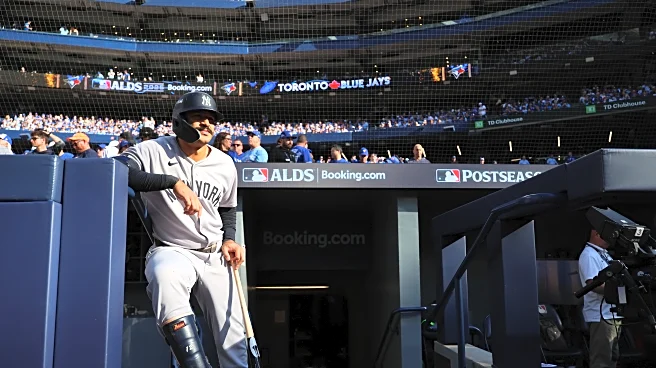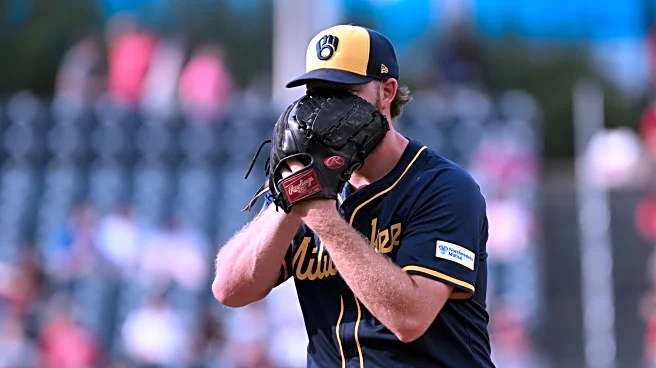It’s Wednesday night at BCB After Dark: the coolest spot for night owls, early risers, new parents and Cubs fans abroad. Come on in out of the cold. So glad you decided to stop in. It’s a special night tonight.
There’s no cover charge. We have a few tables available. The hostess will seat you now. Bring your own beverage.
BCB After Dark is the place for you to talk baseball, music, movies, or anything else you need to get off your chest, as long as it is within the rules of the site. The late-nighters are encouraged to get the party started, but everyone else is invited to join in as you wake up the next morning and into the afternoon.
Last night, I asked you if the Cubs should tender a contract (offer arbitration) to reliever Eli Morgan. Most of you in the comments thought they should because it wasn’t much money, but those who voted were against it by margin of 54 percent to 46. In any case, we’ll find out by Friday.
Here’s the part where we listen to music and talk movies. Tonight is our French New Wave matchup in our BCB Winter Science Fiction Classic. But you’re free to skip that if you want. You won’t hurt my feelings.
I don’t play Charlie Parker much, not because I don’t love Bird but because I prefer to have videos of people playing live and there are only two extant videos of Parker—and he’s synching to a pre-recorded song in one of them.
But in honor of Thanksgiving, which is coming up, here’s Charlie Parker playing “Carvin’ the Bird.”
You voted in the BCB Winter Science Fiction Classic and you people did it to me again. Solaris and Seconds ended up in a tie. That’s the second tie out of six contests.
That means I have to break the tie. Which to choose? I don’t know. I’m not sure which one I like better. We haven’t had an upset yet and we do have another Tarkovsky film coming up in Stalker which I do like better than Solaris, so I’m going to go with Seconds. It means we don’t get that nice 2001: A Space Odyssey versus Solaris matchup in the next round, but I can’t let that determine my vote. I’m sure I’ll get kicked out of all the film critic cocktail parties for that decision, but considering that I wasn’t invited to them anyway, it seems like I’d get kicked out no matter how I voted.
Tonight we’re featuring our French New Wave matchup between the third seed, Chris Marker’s La Jetée (1962) and the six seed, Jean-Luc Godard’s Alphaville (1965)
3. La Jetée (1962) Directed by Chris Marker. Starring Hélène Châtelain and Davos Hanich.
Some of you are going to claim that La Jetée isn’t a movie. Except for one short (4 or 5 seconds) scene, there are no moving pictures. That would be kind of a big deal since “movie” is short for “motion picture” and there’s no motion here. There’s also no dialog, except for some mostly indecipherable background chatter in German. A narrator reads the story to you. Director Chris Marker might not disagree with that position as he called La Jetée a “photo novel” rather than a film.
But what is film but a series of still images that pass so quickly that it creates the illusion of movement? La Jetée presents a series of photographs that forces us, the audience, to create the illusion of movement in our own mind. These still photographs are edited together just as a normal film would be, just without the connective images that create the illusion of movement for us. There are fade ins and fade outs. The images pass slower during quieter and happier moments, while the pace quickens during moments of excitement and danger. There’s a music score that underlines the story that the narrator is telling us. The whole effect is simply poetic.
The photographs, are to be clear, gorgeous. Marker skillfully shoots them in a way that you get perfect shot after perfect shot. They are black-and-white shots from around Paris, with the beginning and end of the film taking place at the observation deck (“la jetée”) at Orly Airport. The “science fiction” scenes of the future take place in some sort of tunnel or basement with just enough lighting for us to see what is going on.
The plot of the film is explained to us at the beginning of the film by the narrator. A boy (and everyone in this film is without a name) is fascinated by a woman he sees at the observation deck at Orly. This experience is interrupted when a man is shot and killed. He is haunted by these images the rest of his life.
Then World War Three happens and Paris is destroyed by nuclear annihilation. (This happens off-camera, of course.) Years later the boy, now a man, is taken underground by the leaders of whatever is left of France. They tell him that mankind is doomed and that its only hope lies in traveling through time. They must return to the past in search of resources like food, medicine and energy. He’s been chosen to return to the time before the war because his memory of that incident provides a strong connection to the pre-apocalyptic times.
There is also a strong DIY element to La Jetêe. Marker didn’t chose to make a “photo novel” instead of a film to make some sort of artistic point. Rather, he wanted to make a movie but he couldn’t afford a movie camera. (He was able to rent one for one afternoon for that one scene.) But instead of letting that stop him, he made a movie with a simple camera that you’d take on vacation in 1962. Then he did everything he could to turn that limitation into an asset. https://youtu.be/d6ZkUYCOmZw?si=xhMC9clUTOd4WWDW
The other impressive thing about La Jetée is that despite how experimental it is, it’s incredibly accessible. You have a narrator reading a short story about time travel as straightforwardly as possible. It’s also only 28 minutes long, so you can watch it in the time it takes to watch a re-run of Friends with commercials.
La Jetée was considered a masterpiece when it came out and still is today. It ranked in a tie for the 67th greatest film of all time in the most recent BFI Sight & Sound poll. (Tied with Metropolis, interestingly enough.) It was remade or reimagined by director Terry Gilliam as 12 Monkeys in 1995. (And as a note; 12 Monkeys and Brazil, two Gilliam films that will show up in our “modern” bracket,” are available on the WatchTCM app until November 28 for anyone who gets TCM through their TV provider. You may want to watch those films now.)
Marker made two versions of the movie, one in French and one in English. He wanted you to watch the version in your native language. Unfortunately, while the French version is available freely on the internet, I’ve only been able to find the English version on the Criterion Channel. So if you have that, watch it there. Otherwise, it’s OK to watch the film in French with English subtitles.
Speaking of that, I normally put a trailer for the film here. But since La Jetée is only 28 minutes long, here’s the entire film. Admittedly this is the French version with English subtitles, but if you can’t find the English version, this will do.
6. Alphaville (1965) Directed by Jean-Luc Godard. Starring Eddie Constantine and Anna Karina.
Alphaville is a trip. But before we get to that, the film needs a little background.
Constantine plays Lemmy Caution, who was the creation of English novelist Peter Cheyney. Caution was an American secret agent/private detective in the vein of Sam Spade, Philip Marlowe, Mike Hammer and maybe Dick Tracy.
Constantine was an American actor who never found any success in the US, but he moved to Europe and found work playing tough guys. Eventually, he was cast as Caution and starred in a series of French and German films playing the trenchcoat-wearing spy or detective. His actual job depended on the plot of the story, apparently.
So Godard took that Lemmy Caution character and set him in a dystopian science fiction world and cast Constantine to play him. So this would be like Humphrey Bogart playing Marlowe (or Dick Powell, who actually played the part a lot more) in an adaptation of 1984.
That setup is not even close to the most insane thing about Alphaville. This is peak Godard, which means there are a lot of slow moments where the characters engage in philosophical arguments, only to be interrupted by fist fights, car chases and shoot outs. This “dystopian Paris of the future” also looks exactly like Paris in 1965. Godard tends to shoot in newer, brutalist buildings that looked more “futuristic” at the time, but look awfully dated today. But there aren’t any props, costumes or special effects to make it look like the future. Rather, that is The main villain, the Alpha 60 computer, is one of those giant computers of the 1960s that have huge tape players on them and take up a whole room.
Because this is peak Godard, there are lots of quick cuts to odd images. Neon signs appear with words like “nord” (north) and “sud” (south). Einstein’s theory of relativity and Planck’s constant appear on the screen somewhat randomly. There are constant references to the Manhattan Project. Also, there are scenes that just randomly appear as their film negative and then come back to normal for no seeming reason.
The set up of the film is that Caution comes to Alphaville undercover on a secret mission from the Outer Countries, which may be foreign countries or may be other planets. The film isn’t really consistent on that point. Alphaville is a dystopia run by the Alpha 60 computer and dedicated to logic. Everyone is expected to adhere to Alpha 60’s principles of logic, which also means no emotion. If they don’t, they are rather comically executed. (Seriously, I laughed.)
Caution hooks up with Natascha Von Braun (Karina) who is the daughter of Professor Von Braun, the creator of Alphaville. That’s not a Manhattan Project reference, but it’s close. She starts as a devoted follower of Alphaville, but her loyalties shift the more time she spends with Caution.
So the whole film is just bonkers. I think it’s bonkers in a good way, but your mileage may very. Like most of Godard’s films, the dialogue is mostly improvised, so that helps to explain why things don’t always make sense.
But Alphaville looks like a great noir, and certainly it is a pioneer in merging noir and science fiction. It’s hard to see any direct connection between Alphaville and Blade Runner, but it’s certainly a spiritual ancestor of it. It’s also an example of Godard using editing to create something good on a low budget. And like the admittedly-superior Breathless, Godard manages to mesh his obsessions with American gangster and noir films with more high-minded topics.
Here’s a modern trailer for Alphaville. This tends to emphasize the action elements of the film, but it does give you a good look at least some of what makes Alphaville look so good. It doesn’t have any of the weirder shots, however.
Now it’s time to vote.
Alphaville can be seen for free on Kanopy or Hoopla with a library card.
You have until Monday to vote.
Coming up next is the original Planet of the Apes (1968), which faces off against one of our two animated films, Fantastic Planet (1973). I assume close to all of you have seen the original Planet of the Apes, but it’s available only on the Indieflix channel, which at least comes with a seven-day free trial. Otherwise you have to rent it. Fantastic Planet is on HBO Max and Criterion.
Welcome back to everyone who skips the music and movies.
Eno Sarris of The Athletic had an article up today about four potential bargains in free agency. One of them, Tatsuya Imai, we’ve already discussed on this page. Another one, Alex Bregman, has been discussed by Al in his Free Agent Target series earlier this week. A third one, Ryan Helsley, might be a topic for another time.
But the fourth one is the one that I want to discuss, right-handed starting pitcher Cody Ponce. You may not be very familiar with Ponce. He pitched for the Pirates in 2020 and 2021 to not much success. His underlying walk and strikeout numbers were good (not great, but good) but he gave up too much hard contact and too many home runs. The Pirates released Ponce after the 2021 season.
Ponce went to Japan and the Hokkaido Nippon Ham Fighters and later, the Tohoku Rakuten Golden Eagles. He found mixed success there and did end up pitching some in the Japanese minor leagues. But he did have some solid seasons in Japan in 2022 and 2023 before struggling in 2024.
Ponce left Japan for Korea and joined the Hanwha Eagles in 2025. There, he became the best pitcher in KBO. Ponce went 17-1 with a 1.89 ERA over 180.2 innings and 29 starts. He set a record for most strikeouts in a KBO season with 252 (breaking a record held by former Orioles and Mariners pitcher Aríel Miranda) and for the most strikeouts in a game with 18, breaking the record of 17 by his Eagles teammate and former Dodger and Blue Jay Hyun Jin Ryu. Ponce won the Korean equivalent of the Cy Young Award last year.
Now it’s easy to say that Ponce, 31, just went to Korea and dominated inferior players. After all, the general thought is that while quality NPB is better than Triple-A and only a little below that of MLB, most scouts think KBO is more like Double-A baseball.
But Ponce isn’t the same pitcher he was in Pittsburgh. For one, he’s made a commitment to conditioning and has a much different body type than he did in MLB. It made a difference. Back then, his fastball sat around 93 miles per hour. Here in this video, he’s hitting 97 with regularity.
Ponce has also picked up a splitter since his MLB days, which has now become his primary secondary pitch. As Sarris notes, the increase in velocity make all of his secondary stuff more effective.
It’s not like other pitchers haven’t gone to Korea and come back to MLB and found success. Merrill Kelly washed out of the Rays minor league system, went to KBO for four seasons and is now an in-demand free agent at the age of 37. Erick Fedde was a poor starting pitcher for the Nationals when he went over to Korea in 2023. He had a great 2024 with the White Sox and Cardinals, although he struggled this past year until the Brewers grabbed him after he was released by the Braves. He was solid out of the Brewers bullpen in a small sample size.
Ponce probably isn’t getting a big deal after one great season in Korea. Any team offering him three years is probably signing him, but most estimates I’ve seen have Ponce getting two years and around $16 million total. I think that’s a little low, so I’m going to put Ponce’s price at two years, $17 million with a team option for a third year with a one million dollar buyout. So that’s two years, $18 million guaranteed.
Would you offer Cody Ponce that? If he pitches like Merrill Kelly after returning from Korea, that would be a steal. The pure stuff that he’s shown in Korea would indicate that there’s a solid chance that at least equals Kelly and a small chance that he’s better.
One thing that the Cubs might have going for them in signing Ponce is that while he made the majors with the Pirates, he came up through the Brewers system as Craig Counsell was the manager there. He wouldn’t have worked with him directly outside of Spring Training, but he is likely familiar with him.
That’s also the kind of contract that wouldn’t prohibit the Cubs from also going after a higher-priced starter like Dylan Cease or Michael King.
So would you sign Cody Ponce for two years, $18 million?
Thanks for stopping by tonight and all week. It’s been fun having you. A thank you goes out to everyone who votes and especially everyone who comments. Please get home safely. Stay warm. Recycle andy cans and bottles. Tip your waitstaff. And join us again next week for more BCB After Dark.













